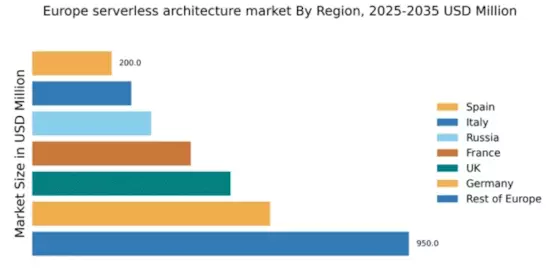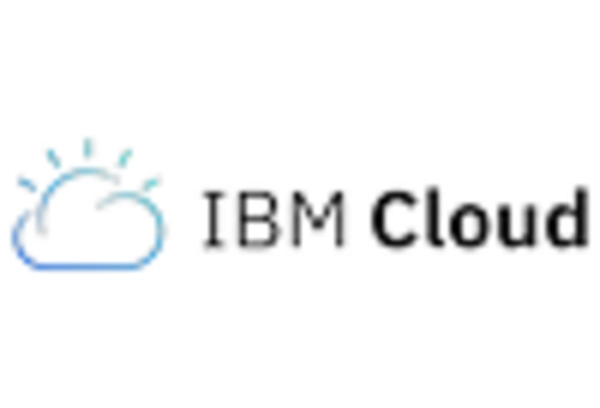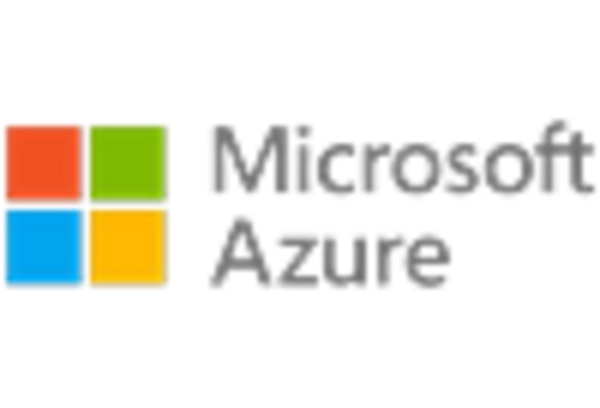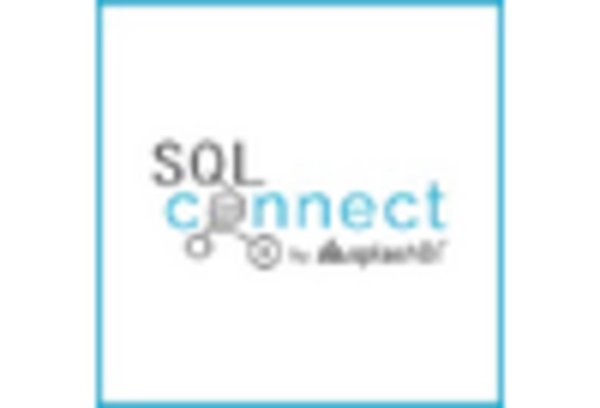The serverless architecture market is currently characterized by a dynamic competitive landscape, driven by rapid technological advancements and increasing demand for scalable cloud solutions. Major players such as Amazon Web Services (US), Microsoft Azure (US), and Google Cloud (US) are at the forefront, each adopting distinct strategies to enhance their market positioning. Amazon Web Services (US) continues to innovate with its Lambda service, focusing on expanding its serverless offerings to cater to diverse enterprise needs. Meanwhile, Microsoft Azure (US) emphasizes partnerships and integrations, particularly with its Azure Functions, to facilitate seamless transitions for businesses moving to cloud-native architectures. Google Cloud (US) is also making strides, leveraging its data analytics capabilities to enhance serverless solutions, thereby appealing to data-driven organizations. Collectively, these strategies contribute to a competitive environment that is increasingly focused on innovation and customer-centric solutions.
In terms of business tactics, companies are increasingly localizing their services to better meet regional demands, optimizing supply chains to enhance efficiency. The market appears moderately fragmented, with a mix of established players and emerging startups vying for market share. This competitive structure allows for a diverse range of offerings, although the influence of key players remains substantial, shaping industry standards and customer expectations.
In October 2025, Amazon Web Services (US) announced the launch of a new serverless framework designed to simplify the deployment of applications across multiple cloud environments. This strategic move is likely to enhance AWS's appeal to enterprises seeking flexibility and ease of use, potentially solidifying its leadership position in the market. The introduction of this framework may also encourage greater adoption of serverless architectures among businesses that have been hesitant due to complexity concerns.
In September 2025, Microsoft Azure (US) expanded its partnership with a leading European telecommunications provider to enhance its serverless capabilities. This collaboration aims to integrate Azure Functions with the telecom's infrastructure, thereby enabling faster deployment of applications for clients in the region. Such strategic alliances not only bolster Azure's market presence but also reflect a growing trend of leveraging partnerships to enhance service offerings and customer reach.
In August 2025, Google Cloud (US) unveiled a new AI-driven feature for its serverless platform, aimed at optimizing resource allocation based on real-time usage patterns. This innovation is indicative of a broader trend towards integrating artificial intelligence within cloud services, enhancing operational efficiency and cost-effectiveness for users. By focusing on AI integration, Google Cloud positions itself as a forward-thinking player in the serverless market, appealing to organizations looking to leverage advanced technologies.
As of November 2025, the competitive trends within the serverless architecture market are increasingly defined by digitalization, sustainability, and the integration of AI technologies. Strategic alliances are becoming pivotal, as companies seek to enhance their service offerings and expand their market reach. Looking ahead, it appears that competitive differentiation will evolve, shifting from traditional price-based competition to a focus on innovation, technological advancements, and supply chain reliability. This transition may ultimately reshape the landscape, fostering a more collaborative and innovative environment among key players.


















Leave a Comment